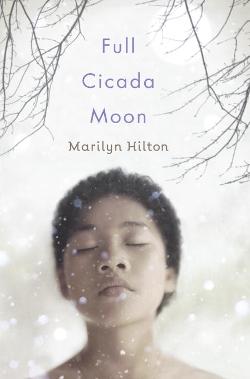 |
Nancy Keane's | Booktalks -- Quick and Simple | |
|
|||||||
 |
Hilton, Marilyn. (3 booktalks)
|
|
|
Booktalk 1 The year is 1969, and seventh grader Mimi and her parents have moved from Berkeley, California to rural Vermont. Mimi, half African American and half Japanese, stands out from her predominantly white classmates and neighbors. She is met with prejudice and struggles to find acceptance. On top of the prejudice she faces due to her race, Mimi also faces other challenges. She wants to pursue science, but many people quickly dismiss her dreams of becoming an astronaut solely because she is a girl. She is told that she must take home ec when she really wants to take shop class, and she is discouraged from entering the school science competition. Mimi hears the word ďnoĒ over and over again, yet despite all obstacles, she and her dreams refuse to falter. (Vermont DCF Book Award 2017) Booktalk #2 In
1969 Mimís family moves to Vermont, where Mimi's
mixed-race background and interests in science make it
difficult to fit in with her peers. Most girls in 1969
leave math, science, and shop class to the boys. Mimi is
a girl who wants to learn about carpentry in shop class
and enter the science competitions sponsored by her
school. Most families in Mimiís new hometown are
caucasian. Mimiís father is black and her mother is
Japanese. Mimi dreams of becoming an astronaut. She
envisions herself flying to the moon like the men aboard
Apollo 11, but everyone tells her this is an impossible
dream. After experiencing many hardships, Mimi learns
one person speaking up can make a difference. This novel
told in verse is historical yet timely. (Oklahoma Childrenís
Sequoyah 2018) Booktalk
#3 All Mimi wants is to be an astronaut, but being a female with Japanese and African-American parents in 1969 Vermont comes with its own challenges. As she makes new friends and overcomes the barriers around her, she realizes what is really important. (Connecticut Nutmeg Book Award nominee, 2018) |
| SUBJECTS: Novels in verse. Racially mixed people -- Fiction. Sex role -- Fiction. |